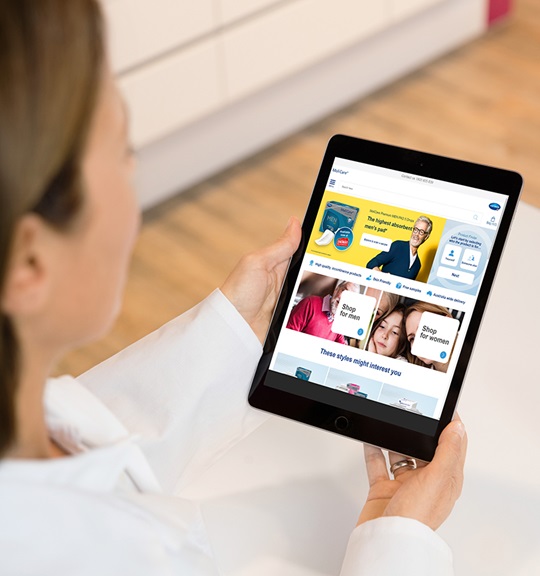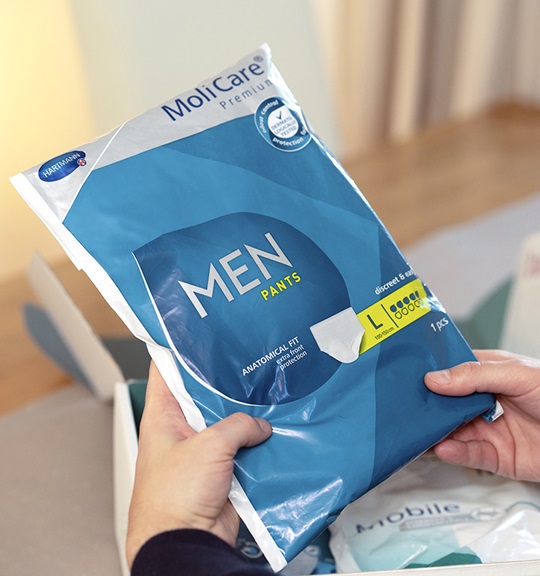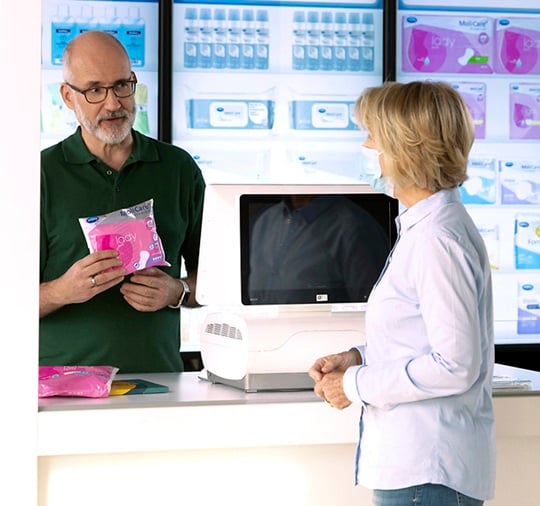Bladder weakness affects people both physically and psychologically, but there are ways to reduce its impact.
Urinary incontinence describes any accidental or involuntary loss of urine connected to bladder disorders and/or the muscle structure of the pelvic floor.
It affects around 5% of the total population, in varying degrees of severity, and as many as one in three people over the age of 65. Despite it being a problem suffered by both men and women of all ages, it is often treated as a ‘taboo’ subject and kept secret by those affected.
Because it can happen suddenly it can be difficult for the people affected to lead an active lifestyle. Some activities make the problem worse while others, by their very nature, take participants beyond easy reach of a toilet. This can result in people withdrawing from social situations.
Fortunately, this doesn’t need to be the case.
Before we talk about how the people affected can help themselves, it’s worth remembering why it is so important to treat the condition correctly.
Understanding the effects of incontinence

If urinary incontinence is not treated correctly, or in time, it can lead to long-term health risks such as:
- Urinary tract infections. Due to incomplete emptying, bacteria and other germs multiply in the bladder and migrate further through the ureters to the kidneys, resulting in severe renal disorders and damage.
- Skin problems. Skin is irritated by constant contact with urine or faeces and can no longer defend itself sufficiently against germs. The natural protection of skin is weakened, leading to skin irritation, chronic eczema or even open pressure sores.
- Emotional stress. People often feel excluded or ashamed of the disorder and are uncomfortable about discussing it. It can put a strain on everyday life with frequent toilet breaks having to be meticulously pre-planned.
Physical and practical recommendations
If you’ve been diagnosed with urinary bladder weakness, there is a lot you can do yourself to eliminate or reduce these risk factors. To support the natural function of the bladder you can make small alterations to your diet and introduce specific daily exercises:
- Diet. Follow a wholesome diet with plenty of easily digestible, high fibre foods such as wholemeal bread, oats, raw fruit and vegetables but avoid foods that can lead to flatulence like pulses, cabbage, onions etc. Yoghurt and kefir are useful additions to your daily diet as they support your natural intestinal flora. Regulate your digestion by taking enough time for eating and avoiding excessive pushing during defecation.
Make sure you drink 1.5-3 litres a day. Herbal and fruit teas or slightly carbonated water are recommended - but avoid drinking fruit and vegetable juices, black tea, coffee and alcoholic beverages as these lead to increased urination and, therefore, act as irritants to the bladder. - Routine. You can "accustom" your bladder to empty at fixed times, with specific intervals. Over time it adapts itself exactly to this rhythm and "forgets" the urge between these times. Begin your bladder training by going to the toilet during the day exactly every two hours for two weeks. Gradually you can increase the intervals between the planned trips to the toilet. You should always go to the toilet at these fixed times even if you do not feel the urge. Keep a diary to monitor your progress.
- Exercise. Regular exercise is very important and can actually improve symptoms but choose activities that don’t exert great pressure on the abdominal cavity and pelvic floor. Walking, swimming, dancing and cycling are ideal.
Yoga can have multiple benefits. As well as helping to reduce anxiety, it focuses on posture and includes exercises to strengthen the pelvis and pelvic floor.
From a practical perspective it’s a good idea to make a list of all the situations where you pass urine involuntarily (maybe when sneezing or coughing) and practice pre-emptive behaviours such as tensing the pelvic floor before the triggering moment, exhaling and keeping your back as straight as possible. Regular practice can lead to automatic contraction of the pelvic floor in trigger situations.
Similarly, practice regular relaxation techniques such as autogenic training, yoga or meditation and include activities in your daily life that reduce anxiety and bring you pleasure.

Improving day-to-day life

There are also small changes you can make around your home to make toileting easier. For example, ensure your toilet is easy to access and is the right height for you. Attach handles to the wall next to the toilet if necessary. In some circumstances, these costs are covered by insurance.
Think too about your wardrobe. Whenever possible wear clothes that can be opened quickly: skirts, trousers and dresses with zip or Velcro® are ideal. Choose materials that are permeable to air, absorbent and easy to wash. If relevant, loose fitting clothes make it easier to empty urine bags or change pads.
Selecting the right continence product
As well as making lifestyle changes, an important aspect in managing urinary incontinence is finding the most appropriate, absorbent product. High quality products, worn discreetly in the underwear, allow you a reliable and discrete disposal of urine, protecting your skin and preventing noise and odours.
Your choice of product depends on the severity and frequency of your condition and should be adapted to exactly meet your needs.

